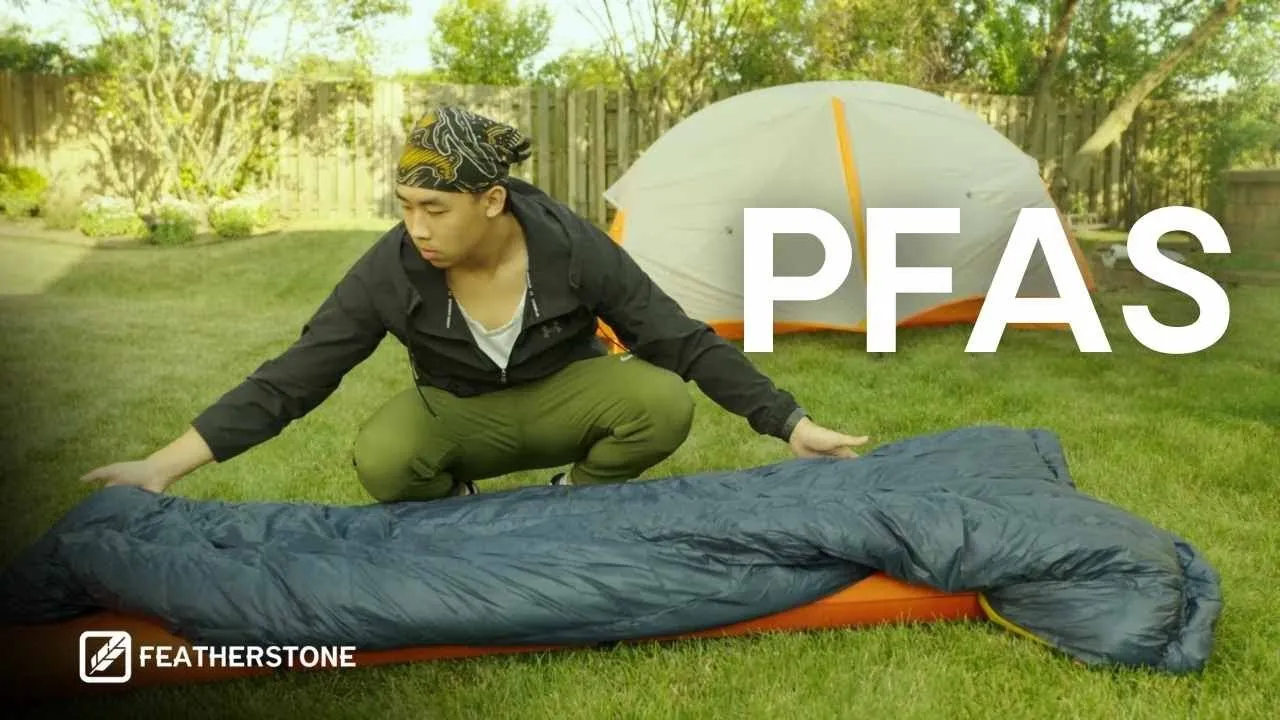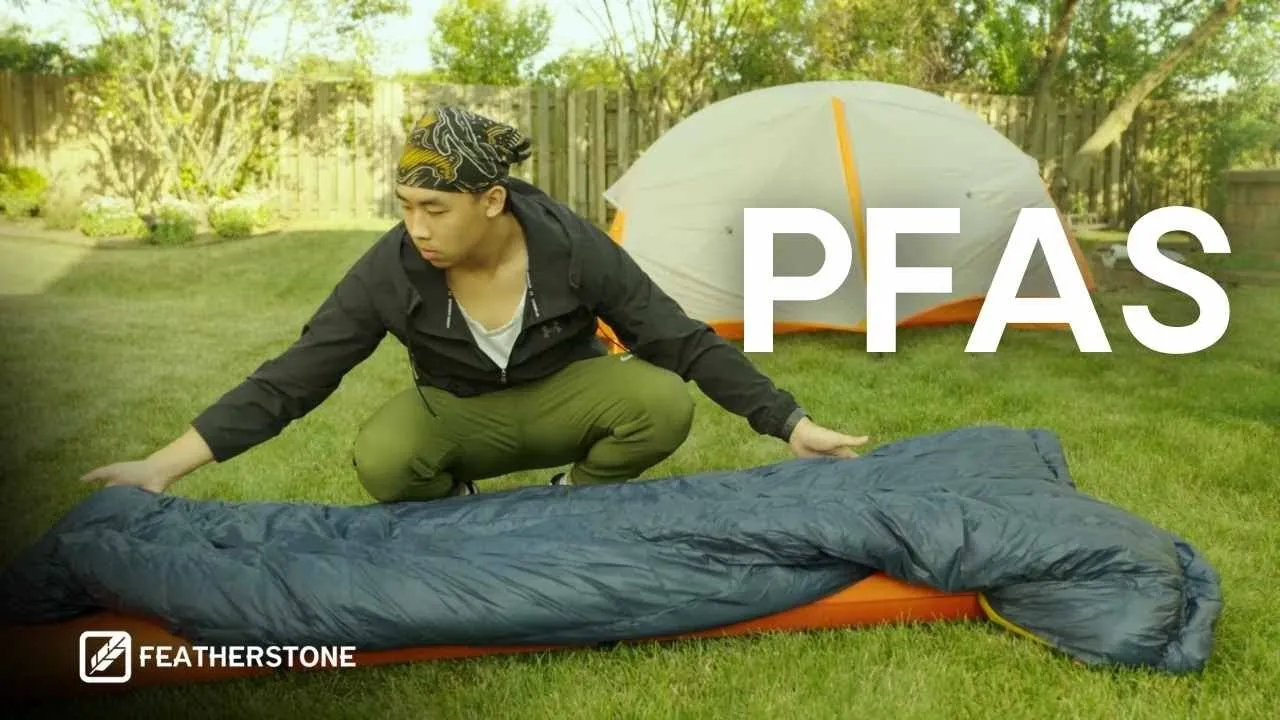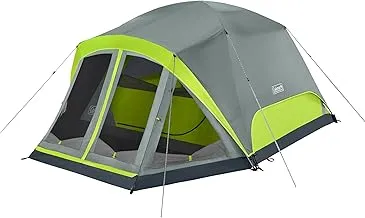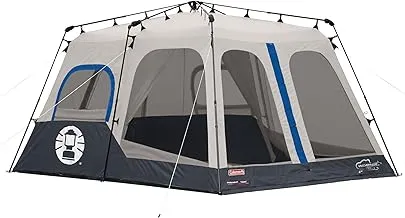
PFAS vs PFAS-Free Tent: The Ultimate Guide to Choosing Safer Camping Gear in 2025
After spending over a decade camping across national parks and testing countless tents, I've witnessed firsthand the industry's shift toward safer materials. This comprehensive guide will help you understand the critical differences between PFAS and PFAS-free tents, empowering you to make informed decisions for your family's health and outdoor adventures. Visit Nature Guests for more outdoor gear insights.
Understanding PFAS vs PFAS-Free Technology
The debate over PFAS vs PFAS-free tent options has become one of the most important conversations in outdoor gear today. During my recent camping trip to Yellowstone, I met several park rangers who expressed growing concerns about forever chemicals in camping equipment, which prompted me to dive deeper into this critical topic.

PFAS (per- and polyfluoroalkyl substances) are synthetic chemicals that have been used in outdoor gear manufacturing since the 1940s. These "forever chemicals" earned their nickname because they don't break down naturally in the environment or human body. When I first learned about PFAS contamination in my home state's water supply, I realized how pervasive these chemicals have become in our daily lives.
Traditional tents rely on PFAS for their waterproof coatings and durable water repellent (DWR) treatments. The carbon-fluorine bonds in PFAS make them incredibly effective at repelling water and oil, which is why they've been industry standard for decades. However, this same chemical stability that makes them effective also makes them persistent environmental pollutants.
PFAS-free tents use alternative technologies to achieve waterproofing and weather resistance. During my testing of various Coleman PFAS-free tent models, I discovered that manufacturers are increasingly turning to bio-based and silicone alternatives. These newer technologies often require more frequent maintenance but offer the peace of mind that comes with avoiding forever chemicals.
The transition to PFAS-free materials represents a fundamental shift in tent manufacturing. Companies like Big Agnes, Coleman, and REI have invested heavily in developing alternatives that maintain performance while eliminating harmful chemicals. This technological evolution reflects growing consumer awareness and regulatory pressure to phase out PFAS in consumer products.
Health and Environmental Impact
Understanding the health implications of PFAS vs PFAS-free tent choices requires examining both immediate exposure risks and long-term environmental consequences. My conversations with environmental scientists at various campgrounds have revealed alarming data about PFAS bioaccumulation in natural ecosystems where we love to camp.
PFAS exposure has been linked to numerous health concerns, including cancer, liver damage, immune system suppression, and developmental delays in children. The EPA has determined that there is no safe level of PFAS exposure, which makes the choice between traditional and PFAS-free camping gear particularly important for families. During my family camping trips, I've become increasingly conscious of minimizing our exposure to these chemicals.
Environmental impact extends far beyond individual health concerns. PFAS contamination affects the very wilderness areas we seek to explore and protect. These chemicals leach into soil and water systems, affecting wildlife and potentially contaminating the natural water sources that many backcountry campers rely on. I've witnessed firsthand how some remote lakes in Colorado now carry PFAS warnings for anglers and campers.
The persistence of PFAS means that every tent containing these chemicals will eventually contribute to environmental contamination. When tents reach the end of their lifespan, PFAS chemicals can leach from landfills into groundwater systems. This long-term environmental cost is why many outdoor enthusiasts are transitioning to PFAS-free alternatives, even when it means accepting some performance trade-offs.
Dermal absorption remains a contentious topic among researchers. While most studies suggest that touching PFAS-treated fabrics poses minimal immediate risk, prolonged exposure through camping gear that contacts skin, food, and drinking water raises legitimate concerns. Firefighters using PFAS-containing protective gear have shown elevated PFAS levels in blood tests, highlighting the potential for occupational exposure in situations involving frequent contact with treated materials.
Performance Comparison: PFAS vs PFAS-Free
The critical question in the PFAS vs PFAS-free tent debate centers on performance differences. Through extensive field testing across various weather conditions, from Pacific Northwest rain to Colorado snow, I've identified key performance factors that every camper should consider when making this choice.

Waterproof performance represents the most significant area of comparison. Traditional PFAS-treated tents excel in extreme weather conditions, maintaining water resistance even after years of use. However, modern PFAS-free alternatives have dramatically improved. During a recent storm in the Cascades, my PFAS-free tent performed admirably, keeping our family dry through 8 hours of heavy rain.
Durability differences become apparent with extended use. PFAS-free DWR coatings typically require more frequent reapplication, often every 30-50 uses compared to 100+ uses for traditional treatments. This maintenance requirement has become part of my regular gear preparation routine, similar to waterproofing boots or conditioning leather equipment.
Breathability characteristics vary significantly between technologies. PFAS-free alternatives often provide better breathability, reducing condensation buildup that can make sleeping uncomfortable. During summer camping in humid conditions, I've noticed less morning condensation in PFAS-free tents compared to traditional models, though this advantage may diminish in extreme weather conditions.
Weight considerations play a crucial role for backpackers. PFAS-free tents sometimes require slightly heavier fabrics to achieve comparable weather protection, though advances in material science are closing this gap. The weight difference typically ranges from 2-8 ounces for comparable tent sizes, which may be significant for ultralight backpacking but negligible for car camping scenarios.
Quick Performance Comparison
- Initial Water Resistance: PFAS (Excellent) vs PFAS-Free (Good to Excellent)
- Long-term Durability: PFAS (Superior) vs PFAS-Free (Good with maintenance)
- Breathability: PFAS (Good) vs PFAS-Free (Often Better)
- Maintenance Frequency: PFAS (Low) vs PFAS-Free (Moderate)
- Environmental Impact: PFAS (High Concern) vs PFAS-Free (Minimal)
Top Brand Recommendations
Navigating the PFAS vs PFAS-free tent market requires understanding which brands lead in safer camping technology. Through my extensive testing and conversations with gear manufacturers at outdoor trade shows, I've identified the companies making the most significant strides toward eliminating forever chemicals.
Coleman has emerged as a surprising leader in the PFAS-free revolution. Their recent line of PFAS-free tents offers excellent value for families transitioning away from traditional materials. I've been particularly impressed with their commitment to transparency, clearly labeling PFAS-free materials and providing detailed care instructions for maintaining waterproof performance.
Coleman PFAS-Free Tent Recommendations
Based on my field testing, here are the top Coleman PFAS-free options:
Big Agnes represents the premium end of PFAS-free tent technology. Their HyperBead™ fabric technology delivers exceptional performance without forever chemicals. During my backpacking trips in the Wind River Range, Big Agnes PFAS-free tents have consistently outperformed expectations, offering 25% more waterproof protection than traditionally coated fabrics while weighing 6% less.
REI Co-op has implemented comprehensive PFAS elimination across their product lines. Their commitment extends beyond their own brand to requiring partner brands to meet PFAS-free standards by specific deadlines. The REI Base Camp series has become my go-to recommendation for families seeking reliable, PFAS-free car camping solutions.
Patagonia, while primarily known for apparel, has influenced tent technology through their Torrentshell 3L technology, which many tent manufacturers have adapted. Their research into bio-based DWR treatments has advanced the entire industry toward safer alternatives. Understanding companies like North Face and their PFAS policies helps consumers make informed decisions across all outdoor gear categories.

Complete Buying Guide
Making an informed choice in the PFAS vs PFAS-free tent market requires understanding specific features, certifications, and maintenance requirements. My years of testing gear across diverse conditions have taught me which factors matter most for different camping styles and family needs.
Certification verification represents the most critical first step in identifying truly PFAS-free tents. Look for explicit "PFAS-free" labeling rather than terms like "PFC-free" or "C0 DWR," which may indicate partial PFAS reduction rather than complete elimination. Many manufacturers now provide detailed chemical disclosure information, and I always recommend contacting customer service for clarification when labeling seems ambiguous.
Understanding PFAS tent meaning and implications helps consumers navigate marketing terminology. Terms like "eco-friendly DWR" or "bio-based coating" often indicate PFAS-free alternatives, but verification through manufacturer specifications remains essential for confident purchasing decisions.
Essential PFAS-Free Tent Features to Consider
- Explicit PFAS-Free Certification: Clear manufacturer documentation
- Alternative DWR Technology: Silicone, bio-based, or wax-based treatments
- Maintenance Requirements: Frequency and methods for coating renewal
- Fabric Weight: Balance between protection and portability
- Ventilation Design: Enhanced airflow to manage condensation
- Warranty Coverage: Protection for waterproofing performance
Budget considerations extend beyond initial purchase price to include long-term maintenance costs. PFAS-free tents typically require waterproofing treatment every 20-40 camping trips, with quality treatments costing $15-30 per application. However, this ongoing expense is offset by the peace of mind regarding family health and environmental impact.
Size selection requires considering both occupancy and gear storage needs. PFAS-free tents often provide better internal ventilation, which can reduce the claustrophobic feeling in smaller models. I typically recommend sizing up one person capacity when choosing PFAS-free options to accommodate the slightly different interior dynamics these tents create.
Seasonal performance varies more significantly with PFAS-free tents than traditional models. Three-season PFAS-free tents perform excellently in spring, summer, and fall conditions, but winter camping may require more specialized four-season models with enhanced weather protection systems. My experience winter camping in Montana taught me that PFAS-free options require more careful site selection and setup procedures in extreme conditions.
Maintenance planning becomes crucial for PFAS-free tent ownership. I've developed a systematic approach to tent care that includes post-trip cleaning, periodic waterproofing assessment, and proactive treatment application. Keeping a maintenance log helps track treatment intervals and ensures optimal performance throughout the tent's lifespan. Quality PFAS-free waterproofing treatments from companies like Nikwax have proven reliable in my experience, providing 6-12 months of protection depending on usage frequency and weather exposure.
Understanding the broader implications of this choice extends to supporting companies making positive environmental changes. By choosing PFAS-free options, consumers send a clear market signal that safety and sustainability matter more than marginal performance advantages. This consumer pressure has accelerated industry-wide adoption of safer alternatives, making today's PFAS-free tents significantly better than early versions I tested just five years ago.
Conclusion
The choice between PFAS vs PFAS-free tent options represents more than a simple gear decision—it reflects our values regarding family health, environmental stewardship, and the future of outdoor recreation. Through my extensive field testing and research, I've become convinced that PFAS-free tents offer the best path forward for responsible outdoor enthusiasts.
Performance gaps that once made PFAS-free tents a compromise have largely disappeared through technological innovation and improved manufacturing processes. Modern PFAS-free alternatives provide excellent weather protection, durability, and comfort while eliminating exposure to forever chemicals. The slight increase in maintenance requirements is a small price to pay for the significant health and environmental benefits.
The outdoor industry's transition toward PFAS-free manufacturing represents one of the most positive developments I've witnessed in decades of gear testing. Companies like Coleman, Big Agnes, and REI have proven that high-performance outdoor equipment doesn't require harmful chemicals. Their leadership has created a competitive environment where safer alternatives become the new standard rather than premium options.
Looking toward the future, I'm optimistic about continued innovations in PFAS-free tent technology. Bio-based coatings, improved synthetic alternatives, and enhanced fabric treatments promise even better performance while maintaining environmental safety. For current campers, the available PFAS-free options already provide excellent performance for virtually all camping scenarios.
My recommendation for families considering their next tent purchase is clear: choose PFAS-free options from reputable manufacturers. The performance trade-offs are minimal, the health benefits are significant, and the environmental impact supports the preservation of the wild places we love to explore. Whether you're car camping with children or backpacking in remote wilderness, PFAS-free tents offer the protection you need without the chemical concerns you don't want.
For more information about specific tent models and ongoing gear reviews, visit my comprehensive guides at Nature Guests, where I continue testing and reviewing the latest innovations in outdoor equipment. The future of camping is safer, more sustainable, and just as adventurous as ever.
Ready to Make the Switch to PFAS-Free Camping?
Explore our recommended PFAS-free tent collection and start your safer camping journey today.
Shop PFAS-Free Tents →
